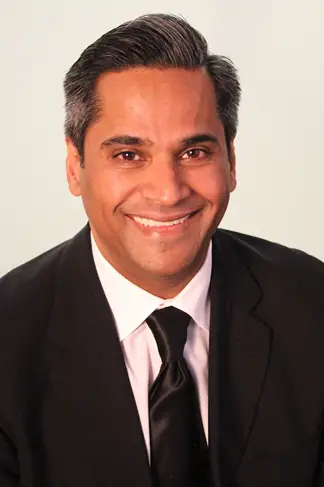BY Dr. MANISH SHAH
Each year brings with it fashion trends, decorating trends, and beauty trends. The latter covers everything from nails, haircare, makeup, and skincare. With the ubiquity of social media, beauty users now can pick up popular trends from anywhere across the world and follow them. Skincare is the biggest segment in the beauty industry with global sales that hover around $130 billion in 2019. There is so much for consumers to digest and decide on. We turned to Dr. Manish Shah, a Denver Board Certified Plastic Surgeon and skin care expert. He takes a microscope to some of the hottest trends in 2019 to give you insight into what’s worth your hard- earned dollars.

CBD In Skincare
Much like it did in 2018, CBD is taking off in the new year. In fact, CBD (short for cannabidiol) has no plans of easing up its reign on the skin-care world in 2019. As a case in point, there are at least two MAJOR skin care brands that now include CBD in their skincare, not to mention the indie companies who have created CBD skincare. Dr. Shah’s take:
“As far as it is good for skin, it acts as both an anti-inflammatory agent and an oil reduction agent. Theoretically, its addition to skin care products, especially those tasked to fight acne and other inflammatory skin conditions, is probably legitimate. It is also a good antioxidant that can help protect against free radical damage to skin cells. CBD can be made from hemp which helps skincare companies get around the federal ban on marijuana. Side effects of unregulated use include Nausea, fatigue, and irritability. CBD can increase the level in your blood of the blood thinner Coumadin, and it can raise levels of certain other medications in your blood by the exact same mechanism that grapefruit juice does.”
Microneedle Patches
Some beauty editors and bloggers swear by pimple patches. According to experts, those patches are about to get even more advanced by way of a ton of tiny microneedles (or “microstructures”). The logic is that you can output a smaller amount of acne-fighting ingredients into these tiny little cones and apply it to the skin, it’s a better, more effective delivery system.
Here’s how they are purported to work: The small band-aid-like sticker has spikes coated with hyaluronic acid that are thinner than a hair follicle. Through these teeny painless pricks in the skin, the patch drives the active ingredients deep into the skin. Dr. Shah’s take:
“There is plenty of good medical literature on the validity of these small patches that are impregnated with various chemicals. The patch gets worn and the needles (either metallic or made out of absorbable polymer) penetrate the skin delivering the chemical treatment. Their design takes advantage of the concept of transcutaneous delivery of drugs. Patches can be custom made to fit various areas of the face and deliver anti-aging or other chemicals while a patient sleeps. The efficiency of delivery is better through the tiny skin punctures than if you only put the chemical directly on the intact skin. In theory, aesthetic practitioners can make custom topical treatments and place them on the patches to deliver customized at home skin treatments for their patients.”
Is a Cryotherapy Facial Is the Best Way to Brighter, Tighter Skin?
Cryotherapy has gained popularity in recent years with spa treatments exposing clients to subzero temperatures to help relieve pain and improve their health. This wellness treatment has recently undergone another adaptation with cryotherapy facial treatment. The Cryo Facial is a cryogenic treatment that is performed by what is considered a “cryoprobe,” which beams vaporized liquid nitrogen across the forehead, cheeks, nose, and chin. Different from the cryotherapy chambers that can be used for pain relief, the facial targets helping the face look younger. Dr. Shah’s take: “This may be more suspect. There isn’t a great deal of study-based evidence that cryotherapy facials actually do what they claim. Typically, cryotherapy uses extremely cold liquid nitrogen to freeze exposed skin cells to kill them, like a wart. The facials use the same liquid nitrogen as a spray, but the aesthetician doesn’t stay in one area too long to avoid frostbite to the skin. Some level of cold injury occurs, probably to a very superficial level of the skin, so there may be some exfoliation. But there are safer ways to get exfoliation without risking frostbite or hyperpigmentation.”
Anti-pollution skin care
Your skin is exposed to environmental aggressors on a regular basis. Although unseen, these pollutants can wreak havoc on your skin by breaking down collagen and elastin, the fibers that give skin its bounce. To help reduce these unwanted side effects, anti-pollution skin care products are continuing to gain favorability among consumers. Just as SPF is now de rigor in skin care, this seems to be the case with an anti-pollution ingredient. Dr. Shah’s take: “I think that this is a new name for old tech. In brief, our skin is exposed to environmental contaminants that create inflammatory conditions. These conditions lead to building up of free radicals in the skin. The ingredients in antipollution skin care are basically strong antioxidants that protect against the free radicals. But the skin is assaulted by more than chemicals. It experiences dehydration, UV exposure, temperature changes, etc. True antipollution skincare should guard against all this. Typical protective and reparative ingredients include vitamin E, vitamin C, retinoids, hyaluronic acid, zinc oxide, vitamin B3, and bisabolol.”
Dr. Shah’s final verdict: Just as one can become a slave to fashion, the same can happen with skin care trends. My best advice is to consult with your skincare physician. Discuss what you are exposed to during the day. Is it sun, pollution, humid air, wind, etc.? Talk to your doctor about what type of skin you have. Skin type changes as you age, and as hormonal factors come into play. Someone who had oily skin in their 20’s and 30’s can have combination skin in their 40’s and 50’s. Speak with your aesthetic provider about what your specific goals are for your skin. Is it reduced acne? Fewer wrinkles? Reduced brown spots? Broken capillaries? Just because something is a trend, does not mean it’s right for your skin care type or your goals. If you have a regimen that works for you, stick with it. Don’t be tempted by designer brands if drugstore brands are effective for you. There is nothing wrong with giving your skin care routine a modern “kick,” but good skincare does not mean one must try everything available on the market or in a med/spa or doctor’s office.
About Dr. Manish Shah

Manish Shah, M.D., F.A.C.S. was born in Canada and raised in the Washington, D.C. area. He graduated with honors from the University of Pennsylvania, receiving a degree in biomedical engineering. He then completed his medical training at the University of Virginia, earning his Medical Doctorate. During this time, he also completed a one-year fellowship in microsurgery research at the New York University School of Medicine / Institute of Reconstructive Plastic Surgery. As a prelude to his plastic surgery training, Dr. Shah completed a rigorous five-year training program in General and Trauma Surgery at Emory University and the Medical College of Georgia. His formal training in Plastic and Reconstructive Surgery was completed at the Univ. of Tennessee College of Medicine – Chattanooga Unit. After completing his plastic surgery training, he moved to New York City when he was selected for the prestigious Aesthetic Surgery Fellowship at Manhattan Eye, Ear, and Throat Hospital. He underwent extensive, advanced training in aesthetic surgery of the face, breasts, and body at the hands of some of the most renowned cosmetic surgeons in the world. This fellowship is widely considered to be the best of its kind in the world. Dr. Shah is one of only a select few plastic surgeons in the country who has undergone formal post-graduate training in aesthetic surgery.
Dr. Shah’s specialties include revision facial aesthetic surgery, rhinoplasty (“nose reshaping”), and aesthetic surgery of the breast (breast augmentation, breast lift, breast reduction). He is, however, well-trained in all areas of aesthetic surgery.
Dr. Shah’s aim is to obtain a natural appearing transformation that complements the real you!
Dr. Shah is a Clinical Assistant Professor of Surgery at the University of Colorado Health Sciences Center. He maintains a private practice in Aesthetic Plastic Surgery in the Cherry Creek neighborhood of Denver.
Dr. Shah is a member of the American Society of Plastic Surgeons, the American Society of Aesthetic Plastic Surgery, the International Society of Aesthetic Plastic Surgery, the Rhinoplasty Society, and the European Academy of Facial Plastic Surgery.
Dr. Shah is board-certified by the American Board of Plastic Surgery.



